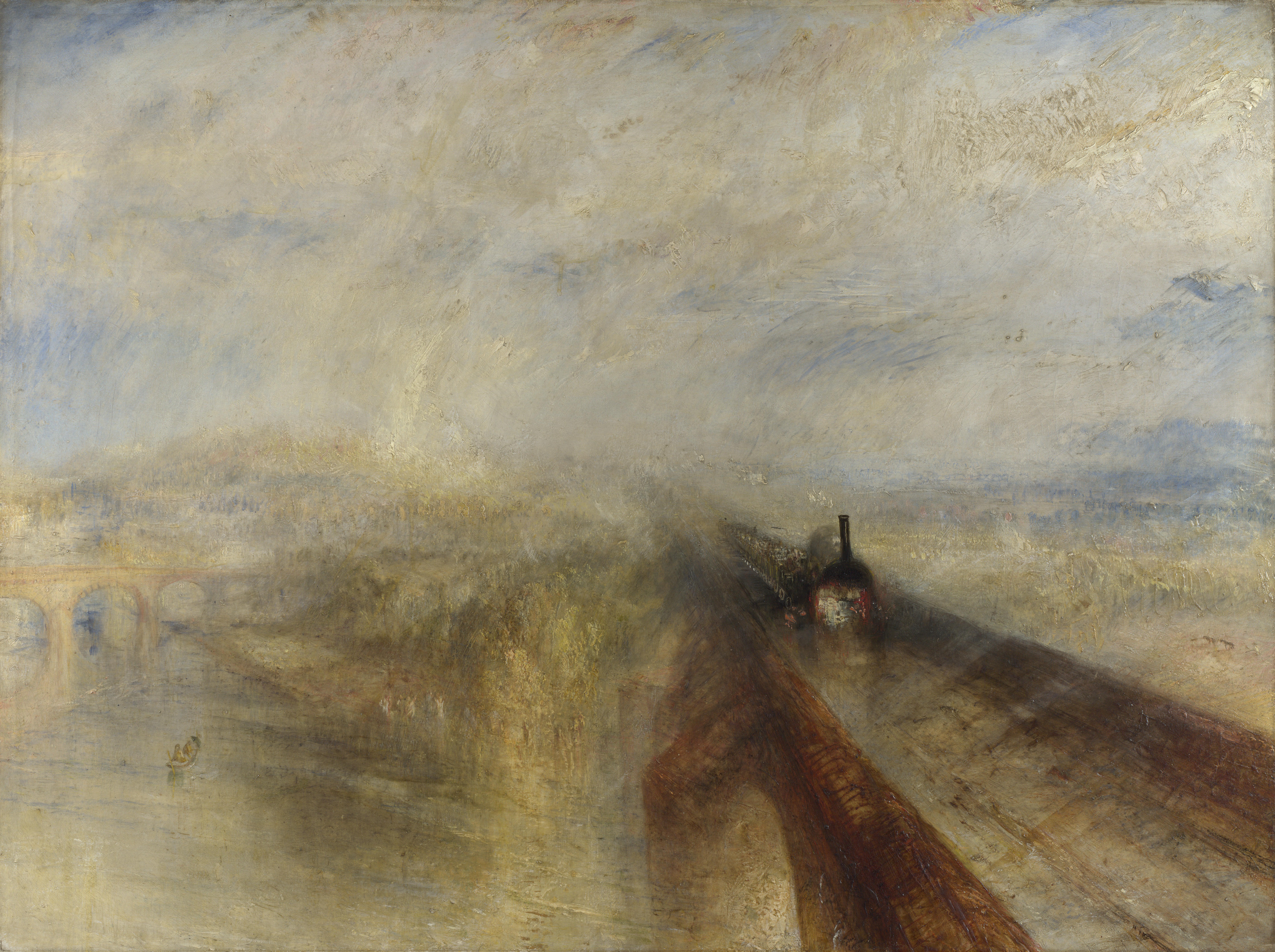 |
|
Rain, Steam, and Speed – The Great Western Railway, by Joseph Mallord William Turner, was completed in 1844, when the artist was 69 years old. Turner moved fully into the free, expressive, colorful treatment at an age when most modern Americans have retired. |
Two lifelong friends have recently entered hospice—one with amyotrophic lateral sclerosis (ALS, or Lou Gehrig’s disease) and one with metastatic breast cancer. Despite my grief, I can’t help but smile each time I hear from them. In both cases, the closer they get to physical shipwreck, the more joyous they become.
Another friend mentioned a similar phenomenon in church this morning: for some believers, the older they get, the more their spiritual disabilities are stripped away and the more they are able to enter into their spiritual gifts.
Tate Britain’s upcoming show, Late Turner: Painting Set Free, on the last works of J.M.W. Turner, illustrates a similar phenomenon in the visual arts. Turner moved fully into his romantic, free, expressive, colorful best at a time when most modern people have retired.
 |
|
Flowers in a Crystal Vase, by Édouard Manet, was painted in 1882, when he was bedbound with gangrene.
|
Édouard Manet died of gangrene at the age of 51, two years after completing his final tour de force, A Bar at the Folies-Bergère. In his last months he was bed-bound, so he painted still lives of the flowers in his sickroom. These intimate, small, perfectly observed paintings are among his finest works.
In 1941 Henri Matisse was diagnosed with duodenal cancer, which left him with a stoma and confined to a wheelchair. As he began to recover from treatment, his ex-wife and daughter were arrested by the Gestapo; Mme. Matisse remained in prison for six months, while Marguerite was tortured and sent to a concentration camp (from which she ultimately escaped). After this, Matisse entered what he called une seconde vie (a second life). For fourteen years, he worked in cutout paper. These works are among the most influential and frequently cited of Matisse’s entire career.
 |
|
Polinesia, the Sky, by Henri Matisse, 1947
|
What is it about artistic maturity that—like spiritual maturity—often catches its practitioners at the end of their lives? For example why did Rembrandt become so deeply reflective in his old age (and why did he paint so many self-portraits at an age when most people have given them up)? Perhaps old age and illness result in freedom from the tyranny of personally-imposed goals. Despite the enfants terrible we tend to lionize in American culture, perhaps artistic genius is truly the province of the elderly.
August and September are sold out for my workshop at Lakewatch Manor in Rockland, ME… and the other sessions are selling fast. Join us in June, July and October, but please hurry! Check here for more information.

I have witnessed, also, how people's disabilities can allow them to experience more joy. On one hand, it seems ironic, but when I consider the Bible verse of 'God making the weak strong' (2 Corinthians 12:10), I am again reminded that our disabilities are never an obstacle for God to bless us.